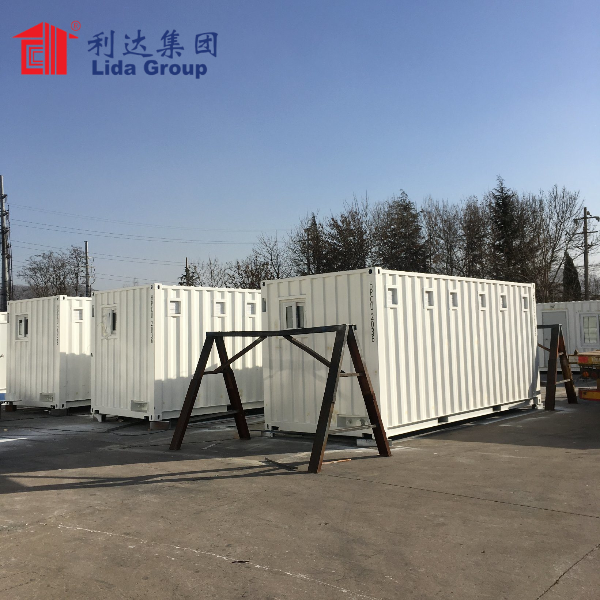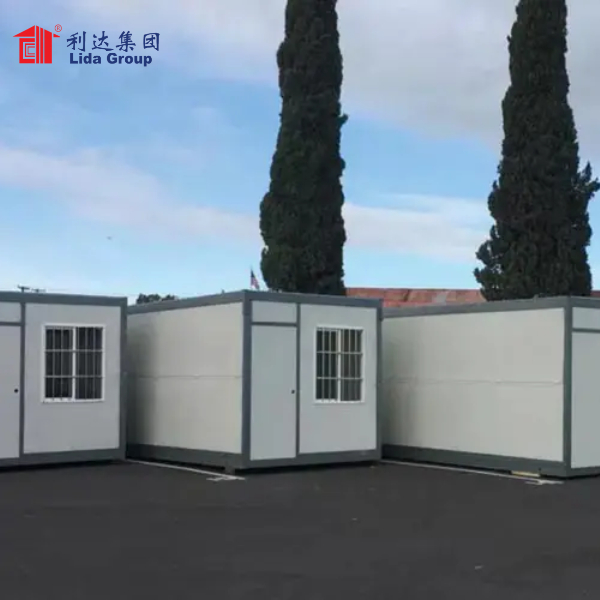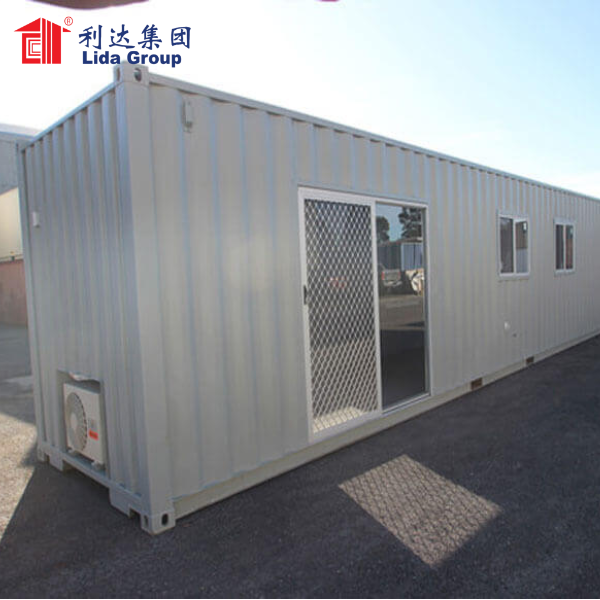Introduction:
In an era where urban spaces are becoming increasingly limited, efficient space utilization has become a critical factor in architectural design. Lida Group’s compact container buildings offer innovative solutions for maximizing space while maintaining functionality and aesthetics. In this article, we will explore the concept, benefits, and design possibilities of Lida Group’s compact container buildings, highlighting how they optimize space and provide versatile solutions for various applications.
- Compact Container Architecture:
Lida Group’s compact container buildings are designed with a focus on space optimization. These buildings utilize the inherent advantages of shipping containers, which provide a sturdy and modular structure that can be easily adapted to different spatial requirements. By repurposing shipping containers, Lida Group creates compact buildings that offer efficient use of space without compromising on quality or style. The compact container architecture enables individuals and businesses to make the most of limited urban spaces, providing flexible and sustainable solutions.
- Versatility in Design:
One of the key advantages of Lida Group’s compact container buildings is their versatility in design. The modular nature of shipping containers allows for flexible configurations and easy customization. Containers can be stacked, combined, or arranged in various orientations to create multi-level structures, expanding the available floor area vertically. Additionally, containers can be modified to include doors, windows, partitions, and other architectural elements to optimize the functionality of the space. This versatility empowers architects and designers to create unique and efficient layouts that meet specific spatial requirements.
- Efficient Space Utilization:
Compact container buildings excel in efficient space utilization. The standardized dimensions of shipping containers (such as 20-foot or 40-foot lengths) provide a framework for planning and design. These containers can be seamlessly integrated to create a cohesive and organized space, minimizing wasted areas and maximizing usable square footage. The compact nature of these buildings is particularly beneficial in urban environments where land is scarce and expensive. By utilizing vertical space and making efficient use of every inch, Lida Group’s compact container buildings offer viable solutions for various applications, including residential, commercial, and public spaces.
- Cost-Effectiveness:
Lida Group’s compact container offices offer cost-effective solutions for construction and operation. The use of repurposed shipping containers significantly reduces the cost of materials compared to traditional construction methods. Moreover, the modular design of container buildings enables efficient construction processes, reducing labor costs and construction time. The cost-effectiveness of compact container buildings makes them an attractive option for individuals, businesses, and organizations with budget constraints or limited financial resources. These buildings provide an opportunity to optimize space without incurring exorbitant expenses.
- Sustainability:
Sustainability is a core principle of Lida Group’s compact container buildings. By repurposing shipping containers, these buildings contribute to the reduction of waste and the conservation of resources. The use of recycled materials aligns with sustainable practices, minimizing the ecological footprint of construction projects. Additionally, compact container buildings can be equipped with energy-efficient systems, such as insulation, solar panels, and rainwater harvesting, further reducing their environmental impact. The sustainable design of these buildings not only benefits the environment but also creates healthier and more energy-efficient living and working spaces.
- Mobility and Adaptability:
Compact container buildings offer mobility and adaptability, making them suitable for various applications and changing needs. These buildings can be easily transported to different locations, allowing for flexibility and adaptability in response to evolving requirements. Whether used as temporary structures or permanent installations, compact container buildings can be relocated and repurposed as needed, providing versatile solutions for different industries, such as retail, hospitality, and education. The ability to adapt to changing demands and environments makes compact container buildings a valuable asset for individuals and businesses seeking flexible and scalable spatial solutions.
- Aesthetics and Design Possibilities:
Lida Group’s compact container buildings offer a range of design possibilities, enabling architects and designers to create visually appealing and functional spaces. The industrial aesthetic of shipping containers can be embraced or modified to suit different design preferences. Containers can be clad with various materials, such as wood, metal, or glass, to enhance their appearance and integrate seamlessly with surrounding structures. Moreover, the modular nature of container buildings allows for easy expansion or modification in the future, providing opportunities for growth and adaptation without compromising the overall design integrity.
- Innovative Applications:
Compact container buildings have found innovative applications across diverse industries. In urban areas, these buildings serve as pop-up shops, cafes, or restaurants, capitalizing on limited spaces and capturing the attention of passersby. They can also be used as temporary offices, exhibition spaces, or event venues, offering flexibility and mobility for different business needs. In residential settings, compact container buildings can be designed as compact homes, guest houses, or even multi-unit housing solutions. The versatility and adaptability of these buildings open up new possibilities for creative and functional spatial solutions.
Conclusion:
Lida Group‘s compact container buildings provide innovative solutions for space optimization in urban environments. These buildings offer versatile design possibilities, efficient space utilization, and cost-effectiveness. By repurposing shipping containers, LidaGroup embraces sustainability and contributes to the reduction of waste. The mobility and adaptability of compact container buildings make them suitable for various applications, while their aesthetics and design possibilities allow for visually appealing and functional spaces. From retail and hospitality to residential and educational settings, these buildings offer versatile solutions for maximizing limited urban spaces. Embrace the concept of space optimization with Lida Group’s compact container buildings and unlock the potential of efficient and sustainable design in urban environments.
Post time: Aug-22-2023



